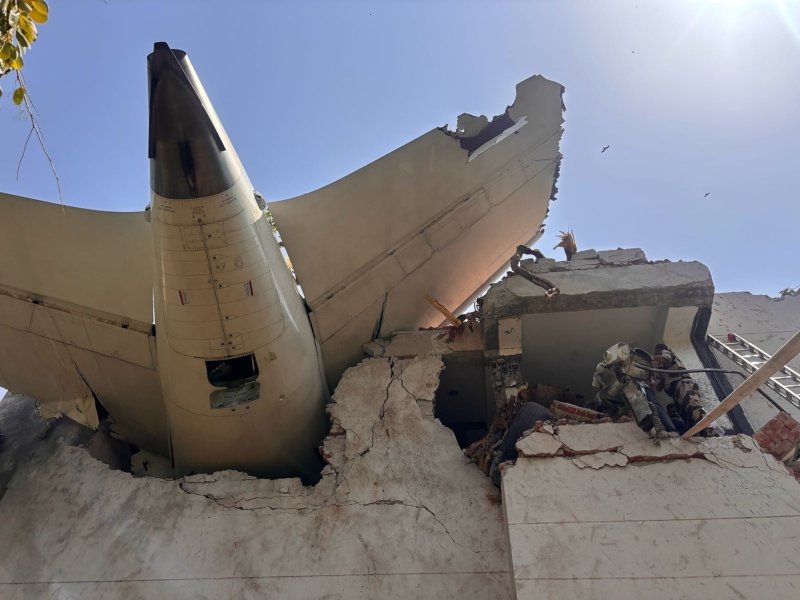
What could have caused Air India plane to crash in 30 seconds?

Indian investigators will be joined by experts from the US and UK in the coming days, as authorities attempt to establish what caused the Boeing 787-8 Dreamliner to crash shortly after take-off just 1.5km (0.9 miles) from the runway at Sardar Vallabhbhai Patel International Airport. BBC reported.
It marks the first time a 787-8 Dreamliner has suffered a fatal crash since it entered commercial service in 2011. Thursday's disaster killed 241 people onboard and more on the ground.
The BBC has spoken to aviation experts as well as pilots based in India - some of whom spoke on the condition of anonymity - who regularly fly 787-8s out of India's international airports to find out what factors might have caused the plane to slam into residential buildings in the heart of Ahmedabad just moments into its flight.
The 787-8 Dreamliner was flown by Captain Sumeet Sabharwal and his co-pilot Clive Kundar. The two were highly experienced, with more than 9,000 combined flying hours. Mr Sabharwal having earned over 22-years expertise as a commercial airline pilot.
The plane was carrying 242 people as it taxied along the runway at Ahmedabad International Airport on Thursday afternoon. The jet took off at 13:39 local time (08:09 GMT), operator Air India said.
India's Home Affairs Minister Amit Shah said the plane was carrying 100 tonnes of fuel - practically a full load - as it climbed out of Ahmedabad.
Almost immediately after take-off the cockpit gave a mayday call, India's aviation regulator said. No response was given by the aircraft after that. It's unclear what prompted the mayday call, but the flight's sole survivor has told Indian media that he heard a loud bang as the plane struggled to gain altitude.
Footage authenticated by BBC Verify then showed the plane flying low over what appears to be a residential neighbourhood. The final transmitted data showed the plane reached a height of 625ft (190m). It proceeds to descend and becomes obscured by trees and buildings, before a large explosion appears on the horizon.
There would have been no time for him to react if he lost both engines," one pilot said. CCTV footage viewed by BBC Verify showed that the plane was airborne for 30 seconds.
The plane crashed in a residential area, with images showing housing blocks heavily damaged in a densely built area which included hospitals and official buildings.
It is almost impossible to definitively establish what caused the disaster based on videos of the plane's brief flight.
In the coming days a complex investigation involving the plane's black box - which records flight data - and an examination of debris will commence. But videos that have emerged show the plane struggling to lift off the ground, seemingly amid a lack of thrust or power.
One cause that has been speculated on by some experts is the possibility of an extremely rare double engine failure. Questions have been raised as to whether the plane had its Ram Air Turbine (RAT) deployed, an emergency back-up turbine which kicks in when main engines fail to generate power for essential systems.


